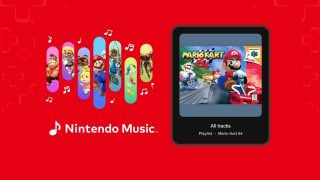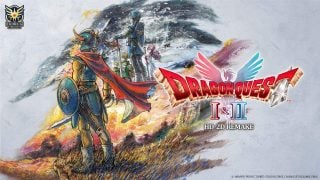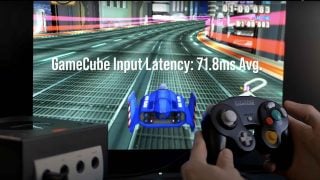We’ve made it, everyone: Pokémon Sword and Shield come out tomorrow. Although the fan community’s reaction to these games has been very mixed, we know there are plenty out there excited with the power of a 10,000,000 Volt Thunderbolt coursing through their bodies. To celebrate the premiere of a brand-new generation of Pokémon, we here at Nintendo Wire wanted to look back at everything that came before Galar, Grookey, Scorbunny, Sobble, and Team Yell. We’re just a few hours away from Sword and Shield’s launch, so let’s end our week-long series with a bang!
Yesterday, we returned to the Kalos region with a retrospective on Pokémon Generation VI; on Tuesday, we looked back on Pokémon Generation V; on Monday, we revisited Pokémon Generation IV; on Sunday, we reminisced about Generation III; on Saturday, we thought fondly about Pokémon Generation II; and on Friday, we did Generation I. Let’s close out our Sword-and-Shield countdown by looking back at Generation VII: Pokémon Sun, Moon, Ultra Sun, Ultra Moon, and Let’s Go, Pikachu! and Let’s Go, Eevee!
So the day has finally come that you’re moving to Alola!
I think we can all remember where we were when we saw that initial Sun and Moon trailer showcasing all the past Pokémon games. I was in my room, sitting in my desk chair, anxiously awaiting news about the games (leaked/rumored about a day before) during the February 26th, 2016 Pokémon Direct. We were only given concept art, but it was enough to ignite the flames of excitement, and the Pokémon Sun and Moon development news cycle took off like a race Mudsdale.
Sun and Moon were the first Pokémon games I covered as a member of the Nintendo Wire team, so I was deeply invested in them. The updates started coming out monthly, with information on new Pokémon, the all-new Alola region, and Alolan Pokémon forms making the games ever-harder to wait for. I was so excited for these games, and they looked so promising. I still have the Special Demo Version of SuMo installed on my 3DS and I’m never letting that thing go. The wait was torturous, and I soaked up every morsel of information, gossip, “leaks,” and rumors I could during news lulls. After some not-so-long-deliberation, I settled on my Starter choice of Rowlet early on because… I mean, come on. How adorable is he with his little bowtie?
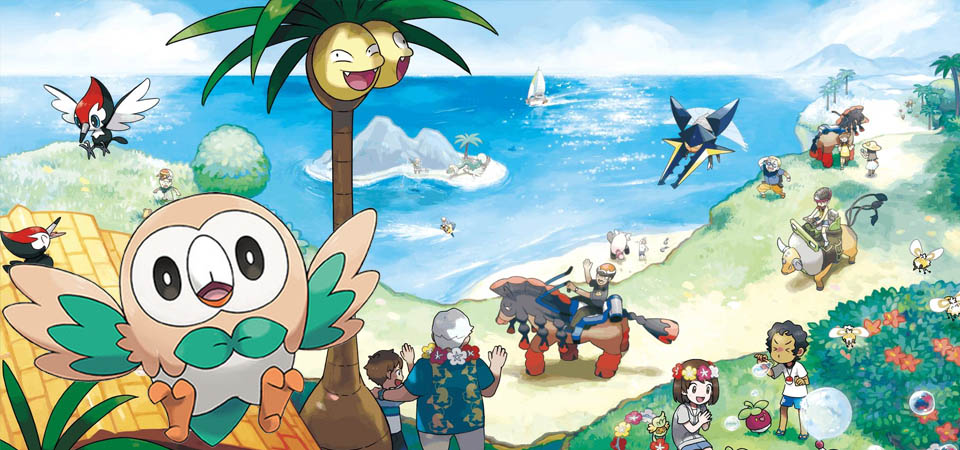
Pokémon Sun and Moon split the fanbase when they came out. Lots of people said they were too easy, too handholdy. Plenty didn’t like the changes made to the standard Pokémon formula, with the replacement of Gyms with Trials and Kahunas. Personally, I thought the games were great and Gen VII is probably my second favorite after Gen III. I loved (mostly) everything about SuMo, from Alola’s tropical atmosphere to the crazy-insane Z-Moves to all the new Pokémon and the Pokémon Professor who walks around without a shirt. Even the story was a bit more interesting than the regular Pokémon fare, focusing on a mother and her two kids and the relationships between them when said mother goes crazy and tries summoning a horrible interdimensional monster because she’s lonely.
Antagonist Lusamine’s motivations were a little… stupid, but I still enjoyed watching her scenes with Lillie and Gladion, and was surprisingly a bit shocked when we learned about their relation. Pokémon Sun and Moon also gave us the brilliant Team Skull, clearly the best villainous team in seven generations of Pokémon games (and probably eight, too, given how lame Pokémon Sword and Shield’s Team Yell looks to be). Team Skull Leader Guzma is one of the best antagonists the series has ever created: He’s hilarious and has some great lines, plus he’s an extremely grounded character whose drive is completely human. He’s a failure; he failed his Island Challenge and so he leads a group of other misfits to cause trouble throughout Alola. Then, he joins and follows Lusamine because she’s the only adult to have ever treated him with any sort of respect. I feel for the guy.
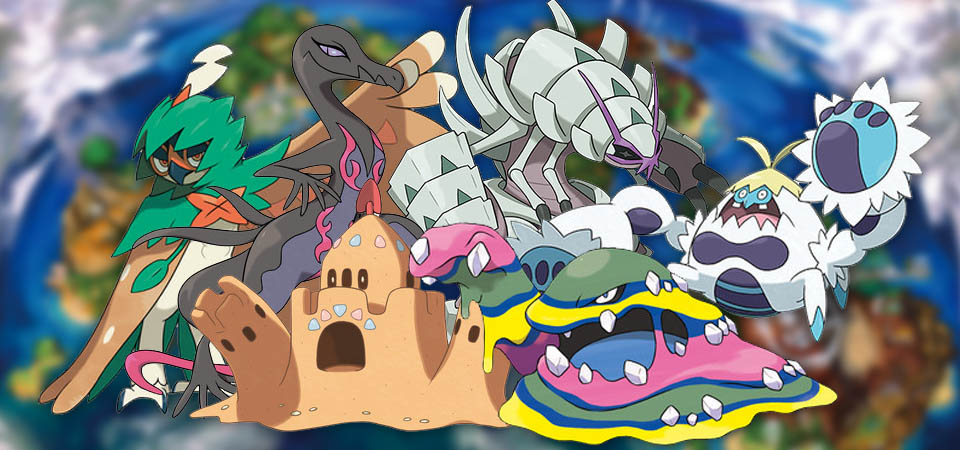
I own all four proper Gen VII games now — Sun, Moon, Ultra Sun, and Ultra Moon — but I started out with Pokémon Sun. My team in that game was Decidueye, Salazzle, Crabominable, Palossand, Alolan Muk, and Golisopod. While Alola doesn’t come close to beating Hoenn for my pick of top region, I am a huge fan of how grand and interconnected each island felt. No longer did the region feel like a collection of towns separated by what amounted to various grassy hallways. The way every location related to each other felt organic (possibly due to the more dynamic camera angles Game Freak utilized) and Alola itself was both stunning and engrossing.
That isn’t to say the games didn’t have their problems. There were a ton of cutscenes. Far too many. It seemed like every time you walked farther than 10 feet, you’d be forced to watch some new crap that completely ruined the pacing of the game. The Rotom Dex was kinda annoying, too, and the game was just far too easy. Ultra Sun and Ultra Moon kind of remedied this, though, and the Ultra Necrozma battle remains one of the most difficult challenges I’ve ever experienced in a Pokémon game. Still, overall, the “Ultra” versions were also entirely too easy, and Gen VII made me long for difficulty settings like we saw in Gen V’s games again.
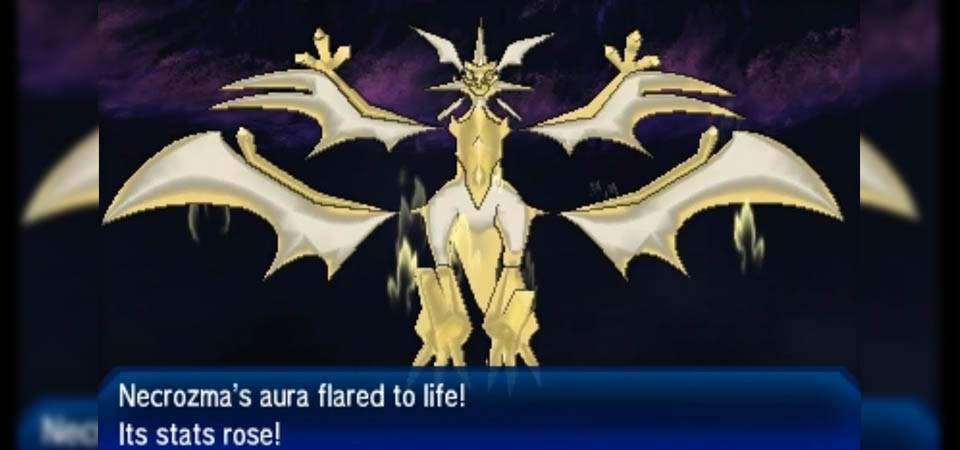
I won’t mince words here: The fact that Game Freak cut over 60 percent of all Pokémon from Pokémon Sword and Shield really sucks. I’m 1000% against “Dexit.” It sucks that not all of my favorite Pokémon can be obtained in the game, and it sucks that I have no idea when I’ll be able to play with them in a new Pokémon game again. It sucks that other players can’t play with their favorite Pokémon or catch every single one or raise their ideal competitive teams or just play the games like they want. It’s unprecedented and was totally avoidable had Game Freak spent more time on these games or expanded the manpower behind them.
It sucks Game Freak removed Mega Evolutions. It sucks they removed 126 different moves — including Z-Moves. Pokémon Sword and Shield will forever be tainted by the promise of what a full Pokémon adventure on a home console could have been. And the pre-release disappointment of Sword and Shield is what makes me appreciate the Gen VII games even more. These titles were on the Nintendo 3DS, a handheld system, and they had EVERYTHING! All the Pokémon. All the moves. Mega Evolutions. A decent post-game (and an even decent-er post-game in Ultra Sun and Ultra Moon). These will probably be the last Pokémon titles to feature every single Pokémon we’ll see for a long time.
I heard from my gramps that two new kids set out from Pallet Town to become Trainers, just like I did once.
Although some would consider Pokémon: Let’s Go, Pikachu! and Let’s Go, Eevee! to be Gen VIII games (since they were released on the Nintendo Switch), they’d be mistaken. These are Gen VII games — the final Gen VII games. And while some would consider these to be the second round of remakes of the original Pokémon Red and Blue Versions, they’d also be mistaken. These are actually remakes of Pokémon Yellow Version, which technically never had one!
Players return to the Kanto region in a pared down version of Pokémon aimed at younger kids with elements of mobile game Pokémon GO thrown in. I wasn’t too tickled when these games were announced; they didn’t really appeal to me, but I eventually came around when Game Freak promised a true Pokémon experience to come the following year. They were a nice, little distraction, and definitely a lot of fun even with some of the more interesting Pokémon mechanics removed.
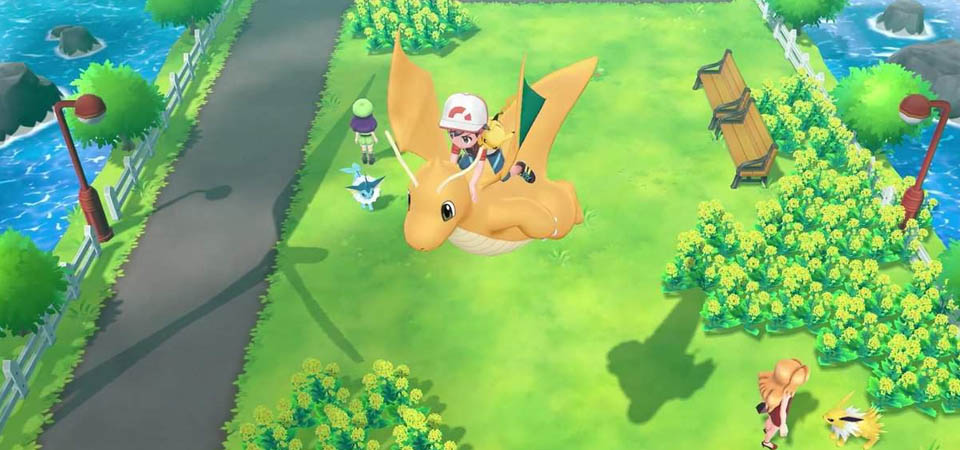
My team in Let’s Go, Pikachu! was fairly standard: Pikachu, Charizard, Blastoise, Venusaur, Alakazam, and Alolan Sandslash. I don’t have a lot to say about these games or a lot of attachment to them. They’re Gen I remade in HD with some small tweaks to the story and about 80 percent of all Pokémon missing. It was cool going through Kanto again in high-definition, listening to the completely-redone soundtrack and experiencing that rush of nostalgia, but Gen I is… Gen I, and even with a shiny coat of paint on it, it’s largely the same experience — especially since things like Natures, Abilities, and Wild Pokémon battles were taken away.
I don’t hate these games; they were a ton of fun, after all. But they were forgettable and they’ll remain forgettable. The return of Walking Pokémon and the additions of co-op play and animated cutscenes for major story points or Legendary Pokémon encounters were pretty cool, but I can’t imagine I’ll ever pick these games up again. They were the most basic Pokémon experiences imaginable and that’s all they’ll ever be.
Guess I better give you a little reward… Time to learn about Z-Power. Woo!
Generation VII brought a high number of significant advancements to the series. Gen VII introduced 81 new Pokémon, 80 new moves, and 41 new Abilities. It brought back a lost Generation IV feature: different overworld music that plays depending on the time of day. It introduced regional variants of Pokémon, a feature that returns in Gen VIII. In Gen VII, certain Pokémon have “Alolan Forms”: total appearance changes due to environmental factors.
Gen VII introduced the ability for players to move freely in any direction rather than in an eight-dimensional grid, the ability to see Trainers behind their Pokémon in battle, and the ability for opposing Trainers to keep their Pokémon in Poké Balls other than the standard type (like Great Balls or Ultra Balls). Gen VII also introduced Z-Moves, extremely powerful moves that can only be used once per battle.
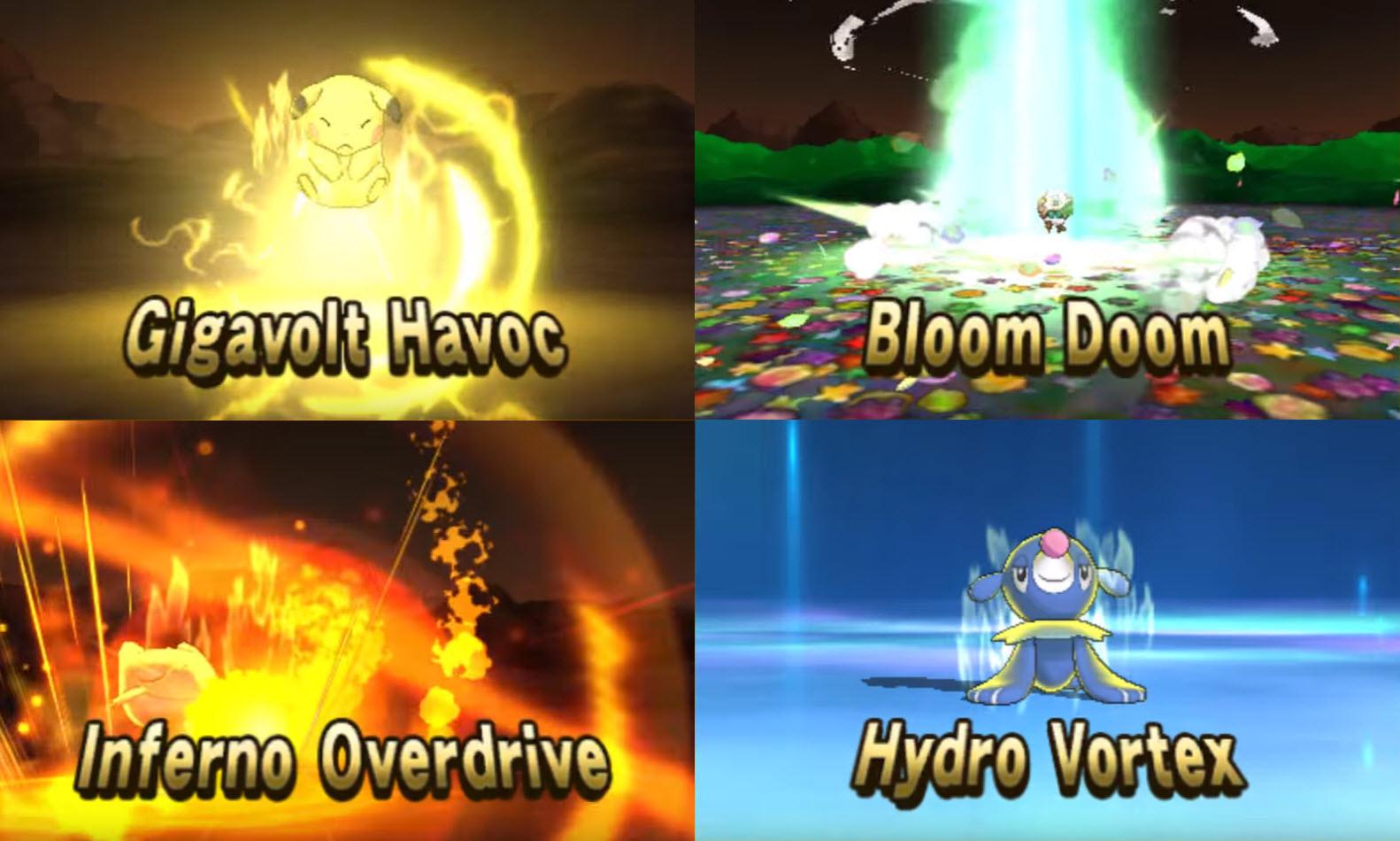
Traditional Gyms were removed in favor of the “Island Challenge” while several tie-ins to the Pokémon anime were added: Ash-Greninja and six Pikachu forms based on anime protagonist Ash Ketchum’s Pikachu. Pokémon Sun and Moon also added four-way “Battle Royal” battles, wild “SOS Battles” (in which wild Pokémon can summon allies), a new method of receiving event Pokémon via QR codes, “Poké Rides,” which replace HMs of games past, “Hyper Training” to maximize IVs of Level-100 Pokémon, the Beast Ball, the Poké Pelago (allowing boxed Pokémon to gather items and raise their Levels), Zygarde Cells and Cores (allowing the player to unlock new Zygarde forms), and the Festival Club — an online multiplayer hub. Move type effectiveness was also added to the 3DS’s bottom screen, letting players know which moves are effective against which Pokémon after the Pokémon has been encountered at least once.
Ultra Sun and Ultra Moon added a ton of new features as well, like a new post-game involving “Team Rainbow Rocket” and the villainous team leaders of all previous games, five brand-new Pokémon, bringing the total to 807 (the first time new Pokémon have been introduced in the middle of a generation), new forms for Necrozma and Lycanroc, three new moves, six new Z-Moves, one new Ability, an expanded Alola Pokédex, new hairstyles and clothing, the Alola Photo Club, the replacement of Zygarde Cells and Cores with Totem Stickers (allowing the player to receive Totem-like Pokémon), and much more.
Pokémon: Let’s Go, Pikachu! and Eevee! also added two more Pokémon, bringing the total to 809, 13 new moves for Partner Pikachu and Eevee, Wild Pokémon in the overworld, motion controls, two-player simultaneous multiplayer, the return of Walking Pokémon, the ability to change Pokémon nicknames at any time, and a Pokémon Storage System replacement, the Pokémon Box, that can be accessed at any time.
Gen VII also removed many features, like counting how many of each Pokémon species the player has encountered, the National Pokédex (all existing Pokémon are in the game, but Pokédex entries for Pokémon outside the Alola Dex aren’t included), Horde Encounters, Sky Battles, Inverse Battles, Triple Battles, Rotation Battles, Super Training, O-Powers, Poké Miles, Contest Spectaculars, Cosplay Pikachu, Super-Secret Bases, Mirage spots, Soaring, and the Hall of Fame PC function. Moves were also made unusable outside of battle.
The hated boss who beats you down, and beats you down, and never lets up… Yeah. Big bad Guzma is here!
Pokémon Sun, Moon, Ultra Sun, and Ultra Moon start off with an intro unlike any other in the series: a video call from the regional Pokémon Professor. Professor Kukui welcomes the player (default name “Elio” or “Selene”) to the Alola region after moving with their mother from Kanto. Meanwhile, a young girl, Lillie, is seen escaping from the Aether Foundation’s Aether Paradise with a Cosmog in her bag.
Three months later, the player meets with Kukui, who takes them to nearby Iki Town to get their Starter Pokémon: Rowlet, Litten, or Popplio. The island kahuna is nowhere to be found, so Kukui instructs the player to head to Mahalo Trail to find them. While on the trail, the player finds Lillie crossing a bridge. Cosmog escapes her bag and is soon attacked by a flock of Spearow. The player protects the Cosmog (nicknamed “Nebby” by Lillie) before Cosmog uses its power to destroy the bridge. Island protector Pokémon Tapu Koko arrives to save both of them.
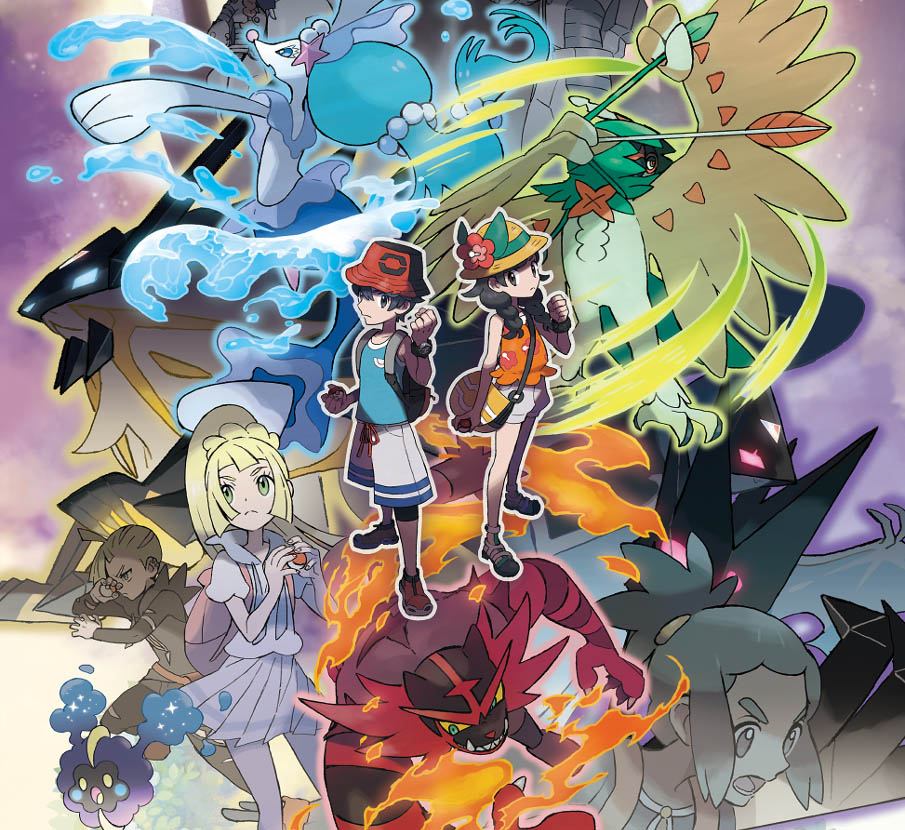
The player also meets Hau, the Melemele Island kahuna’s grandson, and they embark on their Island Challenge together, taking on Trials and beating kahunas. Along the way, they meet Gladion, an associate of Team Skull, and the Aether Foundation, a philanthropic organization which, on the surface, helps neglected and abused Pokémon. It soon becomes clear, though, that Team Skull, its leader Guzma, and the Aether Foundation are working together to summon Ultra Beasts from another dimension.
Guzma and Aether President Lusamine, Gladion and Lillie’s mother, are warped to Ultra Space, where they remain trapped. To rescue Lusamine, the player and Lillie summon the Legendary Pokémon Solagelo or Lunala, which turns out to be an unevolved Cosmog. The player successfully rescues both Guzma and Lusamine before taking on the newly-opened Pokémon League on Mount Lanakila and becoming Alola’s first-ever Champion.
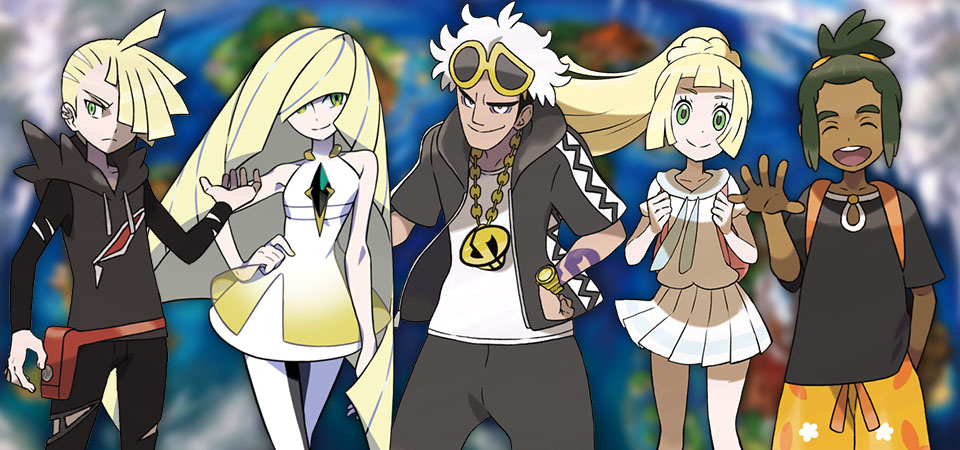
While Sun, Moon, Ultra Sun, and Ultra Moon’s stories weren’t anything compared to Gen V’s, they were much more engaging than many of the stories we got in the past. I really enjoyed the dynamics between Guzma, Lusamine, Lillie, and Gladion, especially the theme of neglect that was so prevalent with all of their characters. I also enjoyed seeing Lillie’s growth, although her little outfit change “I’m a new person!” plot point was a little on-the-nose. Ultra Sun and Ultra Moon kind of complicated the relatively-neat story of the original Sun and Moon, throwing in Necrozma and changing Lusamine’s motivations to be less selfish, which I wasn’t a fan of.
However, I did like the addition of the Team Rainbow Rocket episode in Ultra Sun and Ultra Moon’s post-game. Seeing and battling all the old Pokémon baddies was awesome, as was hearing killer remixes of their iconic battle themes. I would go as far as say that it’s the best story-based post-game content we’ve gotten aside from the return to Kanto in Gen II.
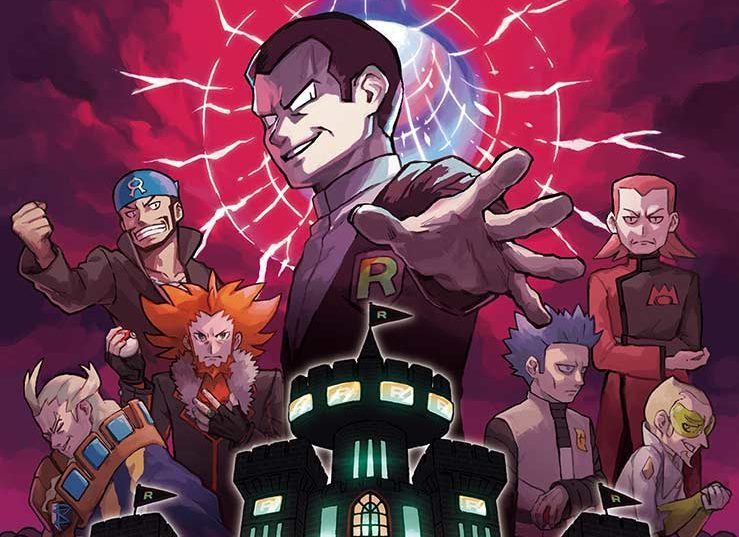
Alola as a region was super appealing to me mainly because of the tropical setting, and I’m a sucker for those. There isn’t really anything I didn’t like about the region: all the cities and landmarks were cool, especially Po Town. The idea of an abandoned, rain-drenched, graffiti-ed town overrun with gangsters was supremely interesting to me. It kind of reminded me of Grand Theft Auto: Vice City’s Prawn Island. If I had one complaint about Alola, though, it was possibly the Vast Poni Canyon, which I felt dragged on for way too long.
The music in Sun, Moon, Ultra Sun, and Ultra Moon was great, too: especially the battle themes. I’m especially fond of the Trainer Battle (Ultra Sun and Ultra Moon’s take, not the original), which pumps me up in a way no other Trainer Battle theme has done. The Super Smash Bros. Ultimate remix of it is pretty cool, as well.
There are some awesome Pokémon designs in Gen VII, as well, like Dedicueye, Incineroar, Vikavolt, Crabominable, Rockruff (who is just the cutest, little thing!), Lycanroc, Salazzle, Tsareena, Palossand, Silvally, Dhelmise, Kommo-o, Necrozma, and Zeraora.
As for Pokémon: Let’s Go, Pikachu! and Eevee… It’s Kanto. We know the drill. The story’s pretty much the same except we have “Chase”/”Elaine” and “Trace” instead of Red/Leaf and Blue. The new musical arrangements are definitely worth mentioning, though, and themes like the Gym Battle theme have never sounded better.
These times in Alola… will always be my most precious memories…
So far, I’ve completed Pokémon Sun, Moon, and Ultra Sun, with an Ultra Moon playthrough just around the corner that I can’t wait to get to. For at least the foreseeable future, the principal Generation VII games will remain the most complete 3D Pokémon games, with 807 Pokémon, all regular moves, Z-Moves, and Mega Evolutions at players’ disposals.
These games certainly aren’t undeserving of criticism: there’s plenty wrong here, or things that could be improved. But I can’t lie: I had a really good time on every one of my trips to the Alola region, and I might just have to return after my Galar adventure is over.
And so, at last, we’ve arrived at the end of our countdown to Pokémon Sword and Shield — and the final day of Generation VII before we turn the page to Gen VIII. It’s been quite a trip down memory lane these past seven days, reliving all our adventures across Kanto, Johto, Hoenn, Sinnoh, Unova, Kalos, and now Alola. What’re your fondest memories with the games? What do you hope to see from this brand-new generation in the next few years? Let us know in the comments below, and thanks for reading!
Pokémon Sword and Shield are set launch worldwide tomorrow, November 14th, 2019. Stay plugged in to Nintendo Wire for even more great Pokémon content — and our full review of the games!
Leave a Comment